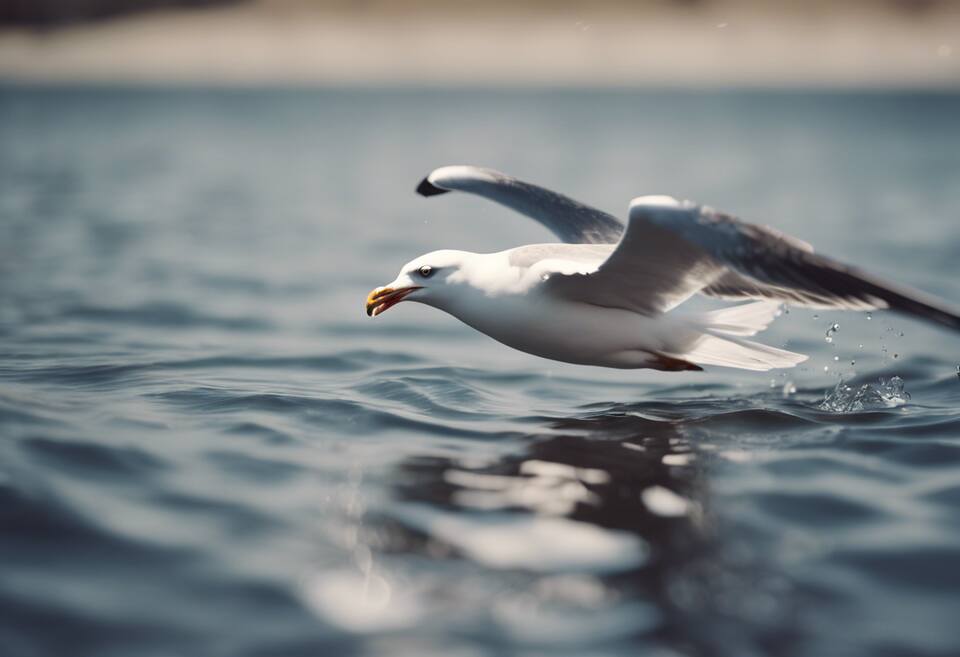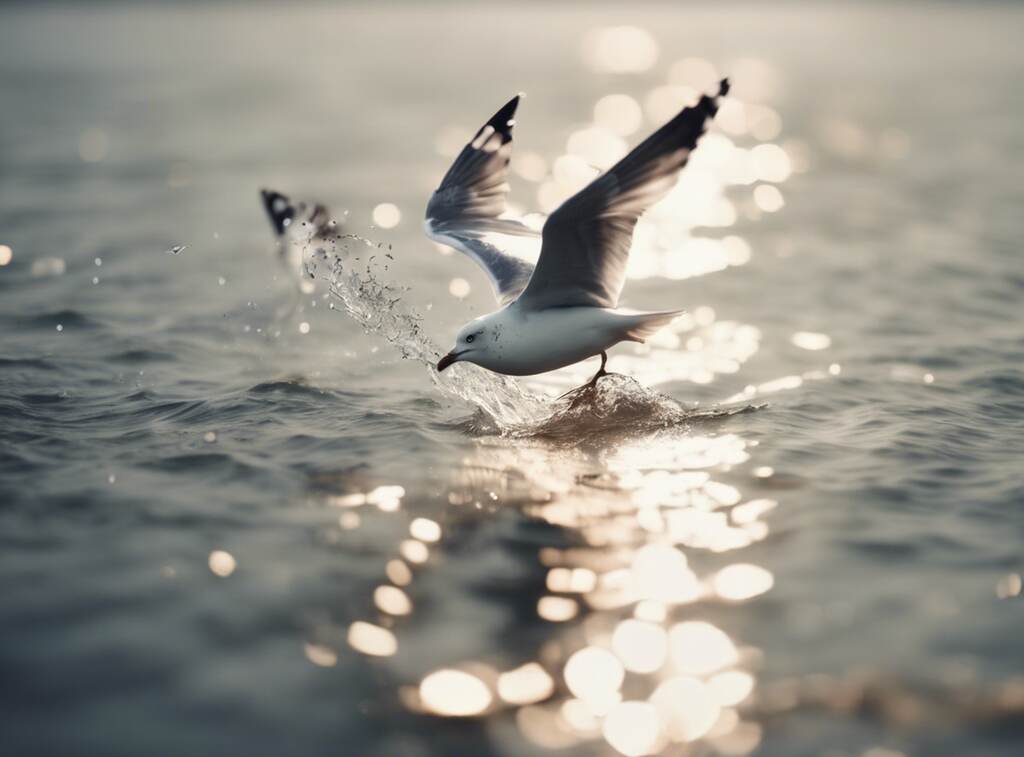Seagulls, with their graceful flight and distinctive calls, are a common sight along coastlines and bodies of water worldwide. These seabirds are known for their scavenging behavior, often seen hovering over beaches and shorelines in search of food. One intriguing behavior exhibited by seagulls is their ability to dive for fish.
Table of Contents
Do Seagulls Possess the Ability to Dive for Fish?
The Behavior of Seagulls
Seagulls are opportunistic feeders and have a diverse diet that includes fish, crustaceans, insects, and even garbage. While they are often seen snatching food from the surface of the water or scavenging for scraps on land, seagulls are also skilled divers. Diving for fish is a common hunting technique employed by certain species of seagulls to catch their prey.
Diving Mechanism
When a seagull spots a fish near the water’s surface, it hovers briefly before making a swift dive into the water. Seagulls are well adapted to diving, with streamlined bodies and strong wings that allow them to plunge into the water with speed and precision. Their keen eyesight helps them locate fish beneath the surface, making them effective hunters both in the air and underwater.
Adaptations for Diving
Seagulls have several adaptations that enable them to dive for fish successfully. Their wings are positioned in such a way that they can fold them back against their bodies to reduce water resistance during a dive. Additionally, seagulls have a nictitating membrane that covers their eyes, protecting them from water impact and maintaining visibility underwater. These adaptations make diving for fish a natural and efficient hunting strategy for seagulls.
Species Known for Diving
While not all species of seagulls exhibit diving behavior, certain types are known for their proficiency in this hunting technique. The Western Gull, for example, is a coastal species found along the Pacific coast of North America known for its diving abilities. Other species, such as the Black-legged Kittiwake, are also skilled divers, plunging into the water from significant heights to catch fish.
Ecological Significance
The ability of seagulls to dive for fish plays a crucial role in the marine ecosystem. By preying on fish and other marine organisms, seagulls help regulate populations and maintain the balance of coastal ecosystems. Their feeding habits also make them indicators of the health of marine environments, reflecting changes in fish populations and water quality.
Conservation Considerations
While seagulls are adaptable and resilient birds, they face threats from human activities such as pollution, habitat destruction, and overfishing. These challenges can impact the availability of fish, their primary food source, and disrupt the delicate balance of coastal ecosystems. Conservation efforts aimed at protecting marine habitats and reducing human impact on coastal environments are essential to ensure the continued survival of seagulls and other marine species.
Seagulls do possess the ability to dive for fish, showcasing their remarkable hunting skills and adaptability to coastal environments. Understanding and appreciating the behavior of these iconic seabirds can help us better protect their habitats and ensure healthy marine ecosystems for future generations.

The Feeding Behavior of Seagulls in Coastal Environments
Seagulls are a common sight in coastal environments, where they display fascinating feeding behaviors that have intrigued both researchers and beachgoers alike. One of the most interesting behaviors to observe is whether seagulls dive for fish as part of their feeding routine.
The Feeding Habits of Seagulls
Seagulls are opportunistic feeders known for their diverse diet, which can include fish, insects, crustaceans, and even scavenged human food. These versatile birds have adapted to various habitats, including coastal areas, where they have easy access to a range of food sources.
Do Seagulls Dive for Fish?
When it comes to catching fish, seagulls typically employ a different strategy than diving seabirds like pelicans or gannets. Seagulls are more likely to engage in plunge diving rather than true diving. Plunge diving involves hovering above the water and then diving straight down to catch fish near the surface. This behavior is commonly seen in species like the herring gull or the laughing gull.
The Plunge Diving Technique
Seagulls have excellent eyesight, which allows them to spot fish swimming near the water’s surface. Once they have identified a potential target, they will hover briefly before tucking their wings in and diving headfirst into the water. This swift and efficient maneuver enables seagulls to catch fish with precision.
Factors Influencing Feeding Behavior
Several factors can influence whether seagulls choose to dive for fish. The availability of fish in a particular area plays a significant role, as seagulls are more likely to exhibit diving behavior in locations where fish are abundant. Additionally, competition with other seabirds and environmental conditions such as weather and tide patterns can impact their feeding habits.
Adaptability and Learning
Seagulls are highly adaptable birds that are known to learn and innovate when it comes to feeding behaviors. In some regions, seagulls have been observed using bread crumbs to bait fish to the surface before plunging to catch them—an example of the creative strategies these birds employ to secure a meal.
Conservation and Observation
Understanding the feeding behaviors of seagulls is not only fascinating from a behavioral standpoint but also essential for conservation efforts. By studying how seagulls feed and interact with their environment, researchers can gain insights into the health of coastal ecosystems and the impact of human activities on these complex habitats.
While seagulls may not dive for fish in the same way as other seabirds, their unique plunge diving technique showcases their adaptability and resourcefulness as coastal feeders. By observing and appreciating these behaviors, we can gain a deeper appreciation for the role of seagulls in coastal ecosystems and the delicate balance of marine life.
Conclusion
Seagulls are fascinating creatures that exhibit a diverse range of behaviors, including their ability to dive for fish. While seagulls are not primarily known for their diving skills like some other seabirds, they are certainly capable of diving into the water to catch fish when necessary.
Their feeding behavior in coastal environments is a complex mix of scavenging, opportunistic feeding, and hunting. Seagulls play a crucial role in maintaining the ecological balance of coastal ecosystems by controlling populations of small fish and marine invertebrates.
By understanding more about seagulls and their feeding habits, we can appreciate the important role they play in the marine environment. Whether they are soaring effortlessly in the sky or plunging into the water to catch fish, seagulls are truly remarkable birds that deserve our admiration and respect.



